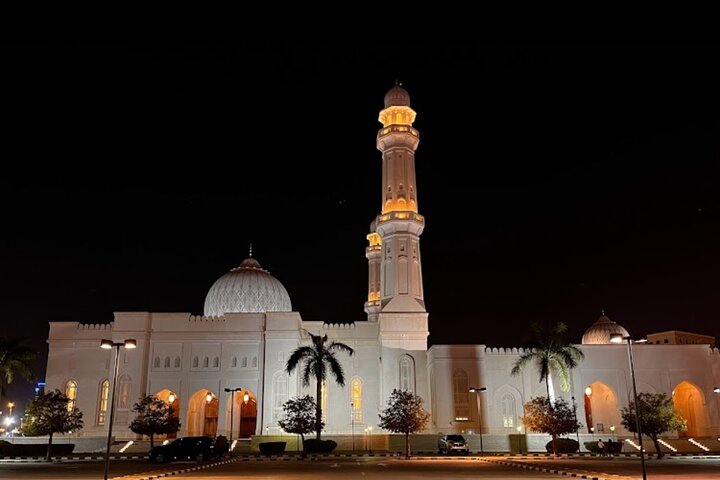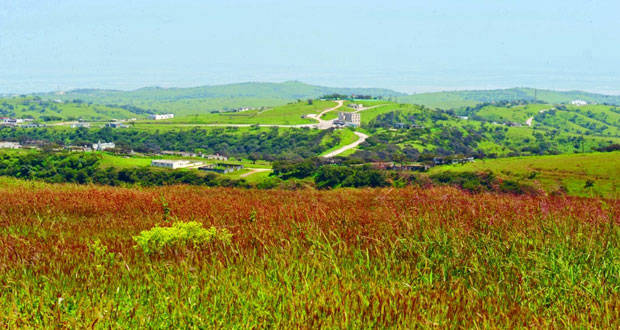Introduction: A Legend Buried in the Sands
Deep in the Rub’ al Khali, the world’s largest sand desert, lies the Lost City of Ubar, a place wrapped in myth, mystery, and history. Known to explorers and writers as the Atlantis of the Sands, Ubar was once a thriving center on the ancient Frankincense trade route.
For centuries, European adventurers, archaeologists, and storytellers have searched for this fabled city. Today, thanks to modern archaeology and satellite imagery, visitors to Oman’s Dhofar region can stand on the very site of this legendary settlement, known locally as Shisr.
The Myth and the History
According to Arab legends and historical texts, Ubar was a wealthy city whose prosperity came from controlling the trade in frankincense—Oman’s prized aromatic resin. The city was said to have been destroyed by a natural disaster, swallowed by the shifting sands of the desert as punishment for its arrogance.
Western explorers, including British writer Wilfred Thesiger and archaeologist Ranulph Fiennes, pursued the mystery for decades. It wasn’t until the 1990s, using NASA satellite data, that archaeologists pinpointed Shisr as the likely site of Ubar. Excavations revealed the remains of fort-like structures and deep water wells that sustained life in this arid region.
Why The Lost City of Ubar Fascinates Visitors
- A Blend of Myth and Reality
Ubar’s story combines Arabian folklore, historical trade records, and cutting-edge archaeological discovery—making it a unique travel destination for history lovers. - Connection to the Frankincense Trade
As part of the Land of Frankincense UNESCO heritage, Ubar was a critical stop for caravans transporting resin from Wadi Dawkah and surrounding groves to the Mediterranean. - Desert Adventure
Reaching Ubar means driving into the Rub’ al Khali, a surreal landscape of endless dunes and shifting sands—a photographer’s dream and an adventurer’s playground.
What to See at the Ubar Archaeological Site
- Ruins of the Fort – Low stone walls and foundations that hint at the city’s former strength.
- Ancient Wells – Ingenious water systems that supported traders and camels on long desert journeys.
- Interpretation Center – Displays and photographs explaining the excavation process and Ubar’s role in history.
- Panoramic Desert Views – The surrounding dunes and desert horizon offer breathtaking scenery.
Nearby Attractions to Combine with Your Visit
- Wadi Dawkah – Explore the frankincense groves that once supplied Ubar’s trade wealth.
- Empty Quarter (Rub’ al Khali) – Venture deeper into the world’s largest sand desert for a true expedition experience.
- Zigzag Road & Hidden Beach – A scenic contrast to the desert with mountain curves and a secluded shore.
- Salalah Souqs – Buy authentic frankincense, perfumes, and traditional crafts linked to Ubar’s heritage.
Best Time to Visit Ubar
The cooler months from October to April are ideal for exploring. In summer, desert temperatures can be extreme, so early morning visits are recommended.
How to Get There
Ubar (Shisr) lies about 170 km north of Salalah. Travelers typically hire a 4×4 vehicle for the trip, as parts of the route cross sandy terrain. Guided tours are highly recommended for safe navigation and richer storytelling.
Why European Travelers Love Ubar
- Historical Curiosity – Europeans have been part of Ubar’s discovery story, making it a culturally shared adventure.
- Archaeological Appeal – The mix of legend and excavation invites comparisons to other lost cities like Petra or Machu Picchu.
- Unique Desert Landscapes – The Rub’ al Khali offers an otherworldly backdrop for explorers and photographers.
- Cultural Immersion – Visiting Ubar often includes meeting local Bedouin communities and learning about their traditions.
Travel Tips for Visiting The Lost City of Ubar
- Bring Supplies: Water, snacks, and sunscreen are essential.
- Photography Gear: A wide-angle lens is perfect for capturing desert expanses.
- Local Guides: Their knowledge brings the ruins to life with legends and history.
- Combine Your Trip: Pair Ubar with other UNESCO frankincense sites for a full heritage experience.
Responsible Tourism
The ruins at Ubar are fragile. Visitors are encouraged to stay on designated paths, avoid climbing on the walls, and support local conservation efforts. By visiting respectfully, travelers help preserve the site for future generations.
Conclusion: Walking Through Legend
Standing at the ruins of the Lost City of Ubar is like touching the edge of a myth. The desert wind carries whispers of caravans, bustling markets, and a city that once thrived on the riches of frankincense.
For European travelers, this is a rare opportunity to combine historical intrigue, archaeological discovery, and natural beauty in one unforgettable journey. Whether you come for the legend, the landscape, or the connection to the Land of Frankincense, Ubar will leave you with a story worth telling for years to come.



